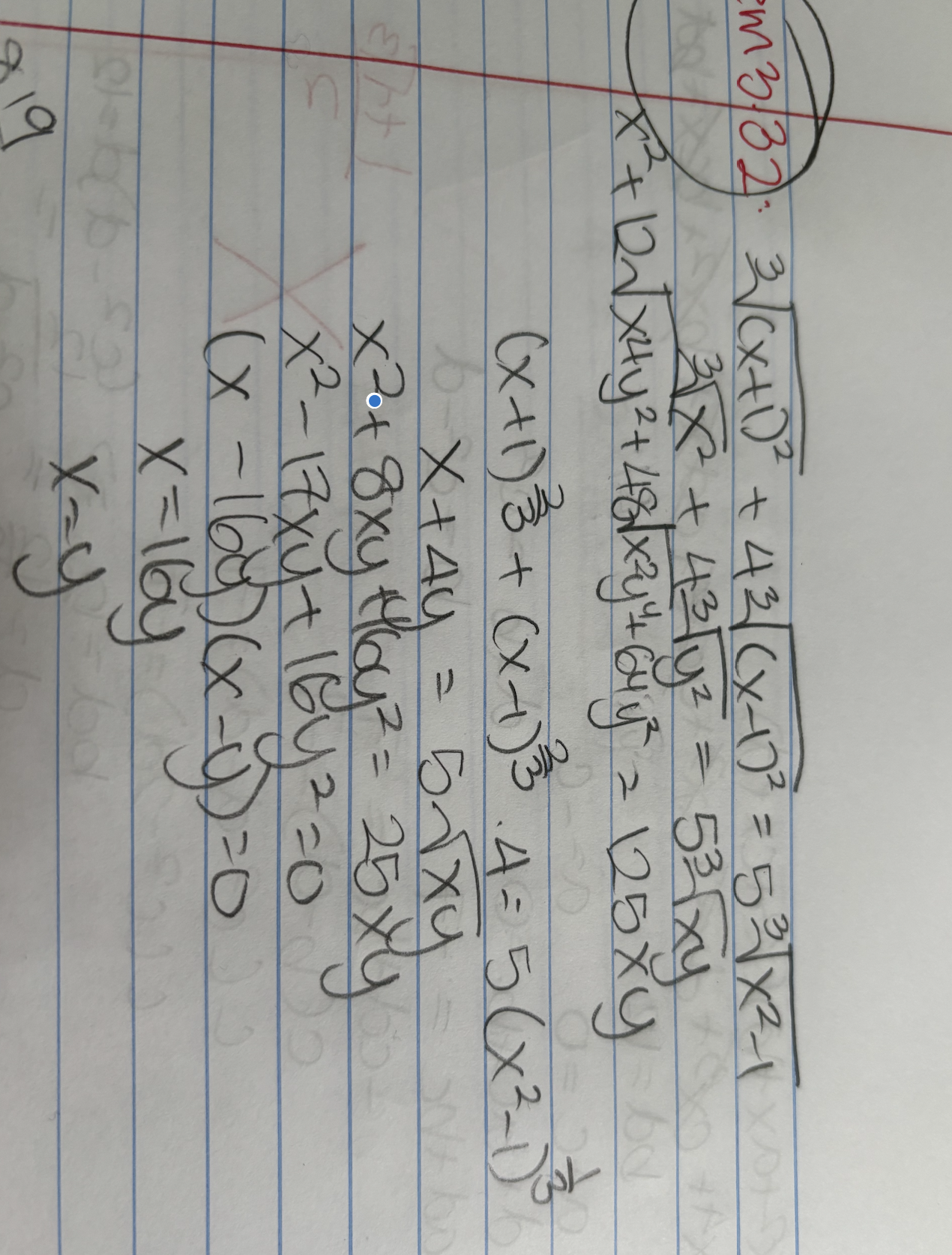Online Course Discussion Forum
MCIII Algebra 3.32
I got three solutions, 17/63, 63/65, and 0. The equation is complicated, so is there a method to do this without plugging in every single root into the equation (i.e. is there a way to avoid extraneous roots?) Also, does cubing both sides also give extraneous roots? Here is what I did:

Thanks,
Tina Jin
It is mathematically invalid to use the same variable to represent two different things. At the very least, it is confusing. So let's assume you meant $X=\sqrt[3]{(x+1)^2}$ and $Y=\sqrt[3]{(x-1)^2}$. After squaring, you got $(X-16Y)(X-Y)=0$. So $X=16Y$ and $X=Y$. The squaring part usually brings in extraneous roots. Here, $X=Y$ produces a solution $x=0$, and it is easy to see it is wrong in the original equation. The problem was introduced when you wrote $(x^2-1)^{1/3}$ as $\sqrt{XY}$. The only thing you could safely write in this place is $|x^2-1|^{1/3}$ as $\sqrt{XY}$. So you are possibly representing a negative number with a positive expression.
This also happens when you solve $X=16Y$. The only chance that this has no problem is when $x+1$ and $x-1$ have the same sign. So, at the time of changing variables, it is safer to say $a = \sqrt[3]{x+1}$, $b = \sqrt[3]{x-1}$, and the equation becomes $a^2 + 4b^2 = 5ab$. You don't need to write the radical for square roots, and thus you don't have to worry about the value being nonnegative.
Another way to make a change of variable is to divide the whole equation by $\sqrt[3]{(x-1)^2}$ (first verify that $x=1$ is not a root, or it is a root and we put it aside). Then the equation becomes $\sqrt[3]{\left(\dfrac{x+1}{x-1}\right)} + 4 = 5\sqrt[3]{\dfrac{x+1}{x-1}}$, and use the change of variables: $z=\sqrt[3]{\dfrac{x+1}{x-1}}$, so the equation becomes $z^2 + 4 = 5z$, and go from there.
The actual solution is $x=\dfrac{65}{63}$.
社交网络